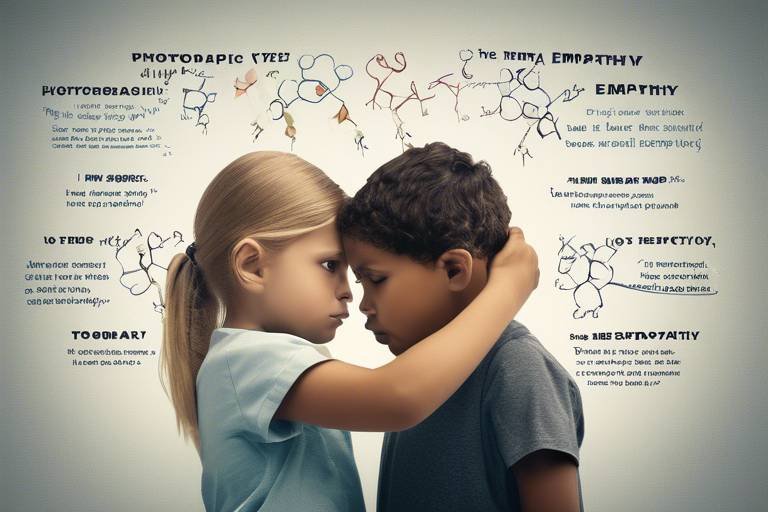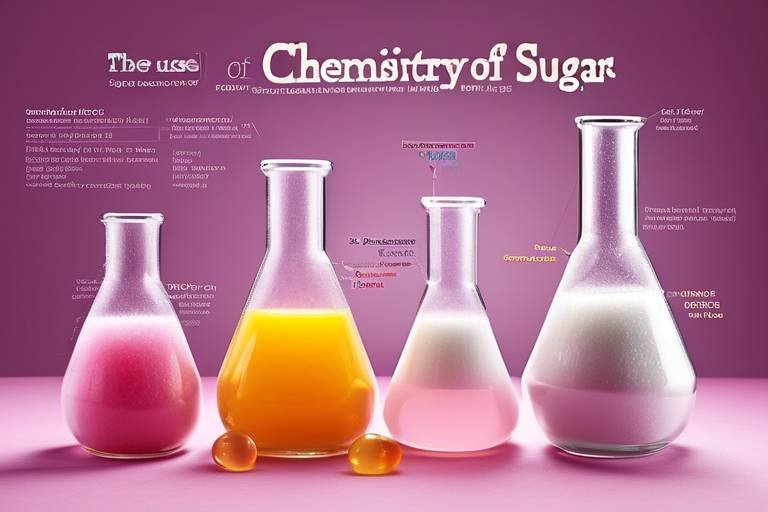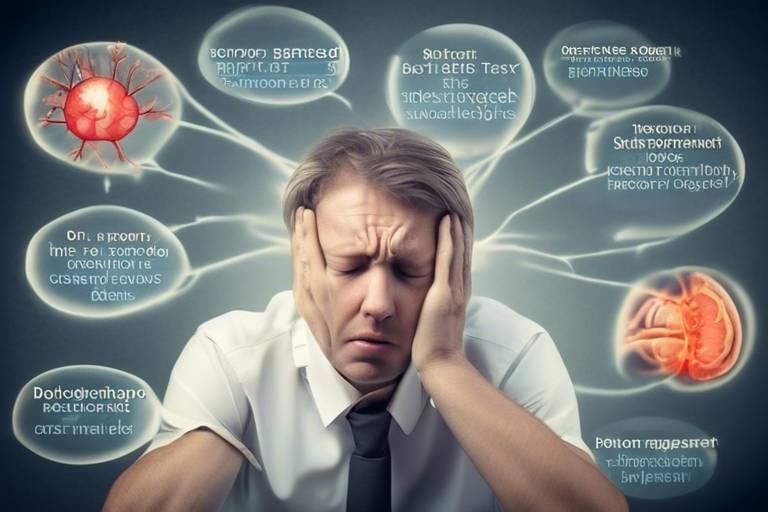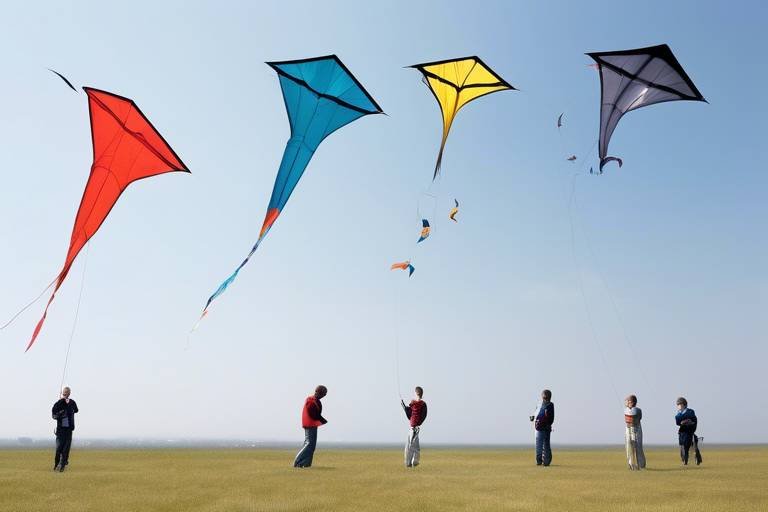The Physics of Roller Coasters - Understanding G-Forces
Have you ever felt your stomach drop as you plummeted down a steep roller coaster track? That exhilarating sensation is not just a thrill—it's the result of fascinating physics at play, particularly the concept of G-forces. G-forces, or gravitational forces, are the forces of acceleration that we feel as weight. They are a critical component of the roller coaster experience, affecting everything from the design of the ride to the sensations experienced by riders. In this article, we will delve into the intricate world of roller coaster physics, focusing on G-forces and their profound impact on both the thrill and safety of these adrenaline-pumping rides.
To truly appreciate roller coasters, we first need to understand G-forces. Imagine being in a car that suddenly accelerates; you feel pushed back into your seat, right? That’s a simple example of G-forces in action. In the context of roller coasters, these forces are felt during rapid changes in speed and direction. When a coaster climbs, drops, or goes through loops, riders experience varying levels of G-forces that can either make them feel heavier or lighter. For instance, during a steep drop, riders may experience negative G-forces, which can create a sensation of weightlessness. This dynamic interplay of forces is what makes roller coasters such thrilling experiences.
Not all roller coasters are created equal, and the type of coaster can significantly alter the experience of G-forces. From wooden coasters with their classic charm to modern steel coasters that twist and turn with precision, each design offers a unique ride. Here’s a quick overview of some popular types:
- Wooden Coasters: Known for their classic feel and rougher rides, wooden coasters often produce strong lateral G-forces due to their design.
- Steel Coasters: These coasters allow for smoother rides and can achieve higher speeds, resulting in intense vertical G-forces.
- Inverted Coasters: Riders dangle below the track, experiencing different sensations of G-forces as they flip and twist.
- Launch Coasters: Instead of a traditional lift hill, these coasters use powerful launches that create a sudden burst of G-forces.
Each type of coaster utilizes its unique design to manipulate G-forces, enhancing the overall thrill for riders.
Centrifugal force is another key player in the roller coaster experience. Picture yourself spinning around in a circle; you feel pushed outward, right? That’s centrifugal force at work, and it intensifies the sensation of G-forces on roller coasters. As the coaster navigates curves, this force can make riders feel as though they are being pushed against their seats. It’s this combination of gravitational pull and centrifugal force that creates the thrilling twists and turns we love. The design of the coaster, including the angle and speed of turns, plays a crucial role in how these forces are experienced.
Understanding the relationship between force and acceleration is vital for grasping how roller coasters operate. According to Newton's second law of motion, force equals mass times acceleration (Fma). This principle is fundamental in roller coaster design; engineers must calculate how much force will be exerted on riders during different parts of the ride. For example, a sudden drop will create a significant change in acceleration, resulting in high G-forces. This is why engineers meticulously plan each element of a coaster, ensuring that the ride is thrilling yet safe.
The experience of G-forces can vary significantly based on where you sit in the roller coaster train. For instance, riders in the back of the train often feel the G-forces more intensely than those in the front. This is because the back of the train experiences the drops and turns slightly later, leading to a more pronounced sensation of being thrown forward or backward. So, if you’re looking for the most thrilling experience, you might want to grab a seat at the back!
Gravity is the ultimate force that governs roller coasters. As the coaster climbs to the highest point, it’s gravity that pulls it back down. This fundamental force not only influences the speed of the ride but also affects the design of the coaster itself. Engineers must consider how gravity will impact the ride’s dynamics, ensuring that it provides the right balance of thrill and safety. Without gravity, we wouldn’t have those exhilarating drops that make our hearts race!
While the thrill of G-forces is a major attraction, safety is always a top priority in roller coaster design. Engineers use advanced technologies and rigorous testing to ensure that every ride is safe for the public. Safety features include reinforced tracks, secure harnesses, and emergency brakes. These measures are designed to minimize risks while allowing riders to experience the exhilarating G-forces that make roller coasters so exciting.
Recent engineering innovations have transformed the world of roller coasters. From computer-aided design to new materials that enhance safety and performance, the advancements in technology have allowed for more daring and exciting rides. Innovations like magnetic launch systems and advanced restraint systems have not only improved the thrill but also reduced the risks associated with high-speed rides.
Before a roller coaster opens to the public, it undergoes rigorous testing to ensure its safety. Engineers perform a series of tests to evaluate the ride's performance under various conditions. Additionally, roller coasters must comply with strict safety regulations set by governing bodies. This process is crucial in ensuring that riders can enjoy the thrill of G-forces without compromising their safety.
The future of roller coasters is bright, with exciting advancements on the horizon. Emerging trends include virtual reality experiences that enhance the thrill, as well as environmentally friendly designs that minimize the ecological impact of amusement parks. As technology continues to evolve, we can expect roller coasters to become even more innovative, pushing the boundaries of what we thought was possible.
What are G-forces?
G-forces are the forces of acceleration felt as weight during rapid changes in speed and direction, commonly experienced on roller coasters.
How do different types of roller coasters affect G-forces?
Each type of roller coaster, such as wooden or steel, uses unique designs that create different experiences of G-forces.
What safety measures are in place for roller coasters?
Safety measures include reinforced tracks, secure harnesses, and emergency brakes, all designed to protect riders while they enjoy the thrill.
How do engineers test roller coasters?
Engineers conduct rigorous testing and comply with safety regulations to ensure that roller coasters are safe for public use before opening.

The Basics of G-Forces
G-forces, or gravitational forces, are an essential concept to grasp when diving into the thrilling world of roller coasters. These forces are not just abstract physics terms; they are the very sensations that make your stomach drop and your heart race as you soar through loops and plunges. At their core, G-forces represent the acceleration experienced by a rider relative to the force of gravity. When you're on a roller coaster, you're not just sitting passively; you're feeling the push and pull of these forces in a way that can be both exhilarating and, at times, a little overwhelming.
To understand G-forces better, let's consider how they function during a roller coaster ride. When the coaster ascends a hill, gravity works against the train, creating a feeling of weightlessness as you reach the peak. This is often referred to as experiencing "negative G-forces." Conversely, as the coaster plunges downwards, gravity pulls you down with increased force, resulting in positive G-forces that can make you feel heavier than usual. This dance between negative and positive G-forces is what gives roller coasters their unique thrill.
But how do we quantify these forces? The standard unit for measuring G-forces is "g," which is equivalent to the acceleration experienced by an object due to Earth's gravity (approximately 9.81 m/s²). For instance, if a roller coaster exerts 3 Gs on a rider, it means that the rider feels three times their normal weight during that moment. This can lead to a range of sensations, from the exhilarating rush of speed to the intense pressure on your body as you navigate sharp turns and sudden drops.
To illustrate the impact of G-forces on riders, consider the following table that outlines the typical G-force ranges experienced on different types of roller coasters:
| Type of Roller Coaster | Typical G-Force Range |
|---|---|
| Wooden Coasters | 1.5 - 3 Gs |
| Steel Coasters | 2 - 6 Gs |
| Inverted Coasters | 3 - 5 Gs |
| Launch Coasters | 4 - 5 Gs |
As you can see, different coaster designs can produce varying levels of G-forces, each contributing to a unique riding experience. Understanding these forces is crucial not only for thrill-seekers but also for engineers and designers who create these adrenaline-pumping rides. They must carefully consider how to balance excitement with safety, ensuring that every twist and turn maximizes fun while minimizing risk.
In summary, G-forces are the hidden players in the roller coaster game. They shape how we feel during the ride, turning ordinary moments into extraordinary experiences. Whether you're a seasoned coaster enthusiast or a first-time rider, appreciating the physics behind G-forces can enhance your understanding and enjoyment of these thrilling attractions.
- What are G-forces? G-forces are the forces of acceleration that riders experience, often felt as changes in weight during a ride.
- How are G-forces measured? They are measured in multiples of "g," with 1 g being the force of gravity at the Earth's surface.
- Why do some rides have higher G-forces than others? The design, speed, and mechanics of the coaster influence the level of G-forces experienced.
- Are high G-forces dangerous? While thrilling, excessive G-forces can pose risks, which is why safety measures are strictly enforced in coaster design.

When it comes to roller coasters, the variety is as thrilling as the rides themselves! Each type of roller coaster offers a unique experience, leveraging different designs and mechanics to create distinct sensations of speed, height, and G-forces. From the classic wooden coasters that evoke nostalgia to the modern steel behemoths that defy gravity, understanding these variations is essential for appreciating the science and excitement behind roller coasters.
One of the most popular types is the steel coaster. Known for their smooth rides and ability to perform complex maneuvers, steel coasters often feature inversions and tight turns that generate intense G-forces. Riders can experience a rush of adrenaline as they twist and turn at high speeds, feeling both weightlessness and the pull of gravity. The looping coasters are particularly famous, allowing riders to soar upside down and experience the thrill of being suspended in mid-air.
On the other end of the spectrum, we have the wooden coasters. These classic rides are renowned for their rickety charm and the unique sensation they provide. The structure of wooden coasters allows for a different kind of G-force experience, often emphasizing drops and airtime hills that make riders feel like they are flying. The vibrations and sounds of a wooden coaster create an immersive experience that many enthusiasts cherish.
Then, there are inverted coasters, where riders are suspended below the track. This design allows for a different perspective and a thrilling sensation of being completely free, as the train twists and turns beneath the track. Riders often feel the G-forces more intensely in these coasters, especially during sharp turns and inversions.
Another fascinating type is the launch coaster, which uses powerful motors to propel the train forward at incredible speeds without the need for a traditional lift hill. This sudden acceleration creates an exhilarating rush that can be felt instantly, and the G-forces experienced during the launch can be quite intense. These coasters often feature elements like vertical drops and steep climbs that further amplify the thrill.
For those who seek a more family-friendly experience, kiddie coasters are designed with younger riders in mind. These coasters are typically smaller and less intense, providing a gentle introduction to the world of roller coasters. Although they may not produce the same level of G-forces, they still offer a fun and exciting experience for children and those new to thrill rides.
In addition to these categories, there are also hybrid coasters, which combine elements of both wooden and steel coasters. By incorporating the best features of both designs, hybrid coasters provide a unique ride experience that can surprise even the most seasoned coaster enthusiasts. These rides often include steep drops, inversions, and airtime hills, making them a thrilling choice for those looking for something new.
Ultimately, the world of roller coasters is vast and varied, with each type offering its own brand of excitement and G-force experience. Whether you prefer the classic feel of a wooden coaster, the thrilling inversions of a steel coaster, or the sudden rush of a launch coaster, there’s something for everyone in the realm of roller coasters. So, the next time you buckle up and prepare for that first drop, take a moment to appreciate the fascinating physics and engineering that make your ride possible!
- What are G-forces? G-forces are the forces of acceleration that riders feel during a roller coaster ride, often experienced as increased weight or a feeling of weightlessness.
- How do different coaster types affect G-forces? Each type of coaster is designed differently, which influences how G-forces are experienced. For example, steel coasters often have more inversions, while wooden coasters focus on drops.
- Are roller coasters safe? Yes, roller coasters are designed with numerous safety measures, and they undergo rigorous testing to ensure rider safety.
- What is the most intense type of roller coaster? Launch coasters are often considered the most intense due to their sudden acceleration and high G-forces.

When you’re flying down a roller coaster, feeling that rush of wind and the stomach-flipping sensation, you might wonder where all that excitement comes from. One of the key players in this thrilling experience is centrifugal force. Now, before you start picturing a giant spinning wheel, let’s break it down. Centrifugal force isn’t a real force in the traditional sense; rather, it’s a perceived force that seems to push you outward when you're in a circular motion. Imagine being in a car making a sharp turn. You feel like you’re being pushed against the door, right? That’s the sensation of centrifugal force at work.
On a roller coaster, this force is felt most intensely during tight turns and loops. As the coaster car speeds through these curves, your body wants to continue moving in a straight line due to inertia. However, the track pulls you back in, creating that exhilarating feeling of being pushed outward. The faster the coaster goes, the stronger this perceived force becomes, contributing to the overall thrill. It’s like being on a merry-go-round; the faster it spins, the more you feel that outward pull.
To put it in perspective, let’s consider the physics behind it. When a roller coaster navigates a loop, the riders experience different types of G-forces, including the effects of centrifugal force. Here’s a simple breakdown of how this works:
| Position in Loop | Force Experienced | Reason |
|---|---|---|
| Top of the Loop | Negative G-Force | Gravity and centrifugal force combine, causing a feeling of weightlessness. |
| Bottom of the Loop | Positive G-Force | The coaster accelerates upward, increasing the force felt by riders. |
| During Turns | Outward Pull | The inertia of the body resists the change in direction, creating a sensation of being pushed outward. |
Understanding this concept is crucial for roller coaster designers. They must carefully calculate the appropriate speeds and angles to ensure that riders experience the thrill without feeling unsafe. Too much centrifugal force can lead to discomfort or even injury, which is why engineers use advanced simulations and models to predict these forces during the design phase. It's a delicate balance—like walking a tightrope between excitement and safety.
So, the next time you find yourself screaming with joy (or fear) on a roller coaster, remember that the exhilarating sensations you feel are all thanks to the fascinating interplay of forces, especially centrifugal force. It’s what makes the ride not just a simple journey through loops and turns, but a thrilling adventure that keeps you coming back for more! And who doesn’t love a good thrill ride?
- What is centrifugal force? - It is a perceived force that seems to push an object outward when it is in a circular motion.
- How does centrifugal force affect roller coaster rides? - It creates a thrilling sensation as riders feel pushed outward during turns and loops.
- Is centrifugal force dangerous on roller coasters? - When designed properly, it enhances the thrill without compromising safety.
- What role does gravity play in roller coasters? - Gravity works in conjunction with centrifugal force to create the overall experience of the ride.

When you hop onto a roller coaster, you might not realize that you’re stepping into a real-life physics experiment. The relationship between force and acceleration is at the heart of the roller coaster experience. To put it simply, force is what makes things move, while acceleration is how quickly they change speed. This dynamic duo is what makes those thrilling drops and hairpin turns possible, creating the exhilarating rush that roller coaster enthusiasts crave.
Let’s break it down a bit more. According to Newton's Second Law of Motion, force is equal to mass times acceleration (Fma). This means that the heavier the roller coaster train (or the riders in it), the more force is needed to achieve a certain acceleration. So, when you’re on a coaster that plummets from a height, the force acting on you increases dramatically, which is why you feel that intense rush in your stomach. The sensation is not just about speed; it’s about the forces acting on your body as you experience rapid changes in velocity.
Now, think about how these forces interact during different parts of the ride. For instance, during a steep drop, gravity pulls the train downwards, creating a force that accelerates the coaster and its riders towards the ground. Conversely, when the coaster climbs a hill, it decelerates, and the forces shift. Riders experience a momentary feeling of weightlessness as the acceleration decreases. This push and pull between forces creates a roller coaster experience that’s not just thrilling but also a fascinating display of physics in action.
To visualize this, consider the following table that summarizes the relationship between force, mass, and acceleration on a roller coaster:
| Mass (kg) | Acceleration (m/s²) | Force (N) |
|---|---|---|
| 500 | 9.8 | 4900 |
| 600 | 9.8 | 5880 |
| 700 | 9.8 | 6860 |
This table demonstrates how increasing mass affects the force experienced during acceleration. It’s clear that a heavier train will exert more force, impacting how riders feel throughout the ride.
Additionally, the design of the roller coaster itself plays a crucial role in how these forces are experienced. Engineers carefully calculate the curves, drops, and turns to ensure that the acceleration feels thrilling yet safe. For example, a coaster designed with gentle slopes will create a different experience than one with sharp drops. This is where the art of engineering meets the science of physics, crafting an unforgettable ride that keeps you coming back for more.
So, the next time you’re screaming your lungs out on a roller coaster, remember that you’re not just having fun; you’re also experiencing the incredible forces of nature at play. It’s a perfect blend of thrill and science, where every twist and turn is a testament to the laws of physics that govern our world.

The rider experience on a roller coaster is a thrilling combination of speed, weightlessness, and the exhilarating rush of G-forces. Have you ever wondered why some riders scream more than others? It all boils down to their position in the train, which can dramatically alter how they perceive the ride. For instance, sitting at the front offers a unique view and a sense of anticipation as you crest the hills, while those at the back feel the full force of acceleration and deceleration, making for a different type of thrill.
To illustrate the differences, let’s break down the typical sensations experienced by riders based on their seating position:
| Seating Position | Sensation Experienced |
|---|---|
| Front | Clear view, anticipation, smooth transitions |
| Middle | Balanced experience, moderate G-forces |
| Back | Intense acceleration, strong G-forces, delayed reactions |
Moreover, the sensation of weightlessness, or "airtime," is a distinct feature of many roller coasters. This occurs when the coaster dips suddenly or goes over a hill, causing riders to feel as if they are floating. It’s this moment of free-fall that often elicits gasps and screams, as riders experience a brief escape from gravity's pull. The thrill is amplified by the design of the coaster itself—some coasters are specifically engineered to maximize airtime, creating an unforgettable experience.
Another fascinating aspect of the rider experience is the psychological component. The anticipation leading up to the ride, the adrenaline rush during the ride, and the exhilaration afterward can create a roller coaster of emotions—pun intended! Riders often bond over shared experiences, recounting their favorite moments and the feelings they had during the ride. This social aspect is a key part of why people flock to amusement parks year after year.
In conclusion, the rider experience is not just about the physical sensations of G-forces and speed; it encompasses a wide array of emotional and psychological factors that make roller coasters one of the most popular attractions in amusement parks around the world. Whether you’re a thrill-seeker or a casual rider, understanding these dynamics enhances your appreciation for the artistry and engineering that goes into each ride.
- What are G-forces? G-forces are the forces of acceleration felt by riders, which can make them feel heavier or lighter depending on the coaster's movements.
- How does seating position affect the ride experience? Seating position influences the sensations felt during the ride, with front seats offering anticipation and back seats delivering intense acceleration.
- What is airtime? Airtime occurs when riders experience a moment of weightlessness, typically during sudden drops or hills.
- Are roller coasters safe? Yes, roller coasters are designed with numerous safety measures and undergo rigorous testing before opening to the public.

Gravity, the invisible force that pulls us toward the Earth, plays a crucial role in the thrilling world of roller coasters. Imagine yourself at the top of a steep drop, your heart racing and adrenaline pumping. What you might not realize is that gravity is the driving force behind that exhilarating rush. As the coaster car reaches the peak, potential energy builds up, waiting to be transformed into kinetic energy as it plunges downward. This transformation is what makes roller coasters so exhilarating and, at times, terrifying.
The relationship between gravity and roller coasters can be likened to a game of tug-of-war. At the top of a hill, gravity is pulling you down with all its might, while the coaster's structure is holding you in place. Once the coaster begins its descent, gravity takes over, and you experience that thrilling sensation of weightlessness. This feeling is often described as a free fall, where the body momentarily feels lighter than air. It's this interplay between gravitational force and the design of the coaster that creates the heart-stopping moments we crave.
The design of roller coasters takes gravity into account at every twist and turn. Engineers must carefully calculate the height of drops, the steepness of inclines, and the speed of turns to ensure a safe yet thrilling ride. For instance, consider the following factors:
- Drop Height: The higher the drop, the more potential energy is converted into kinetic energy, leading to faster speeds.
- Angle of Descent: Steeper angles increase the gravitational pull felt by riders, enhancing the sensation of speed.
- Inversions: Loops and corkscrews utilize gravity to create thrilling experiences, relying on centrifugal force to keep riders safely in their seats.
Understanding gravity's role in roller coaster design also involves recognizing how it affects the rider's experience. Depending on where you sit in the train, your experience of gravity can vary significantly. For example, those sitting in the front often feel the full force of gravity as they crest a hill, while back-row riders may experience a delayed sensation. This variance adds an extra layer of excitement, as each ride can feel uniquely different based on your seat.
In summary, gravity is not just a background player in the roller coaster experience; it is a fundamental force that shapes every twist, turn, and drop. As engineers continue to push the boundaries of roller coaster design, understanding gravity will remain essential. It ensures that while we seek thrills, we also maintain safety, allowing us to enjoy the ride without fear. So, the next time you find yourself screaming down a roller coaster, take a moment to appreciate the incredible physics at play—gravity is not just pulling you down; it's also elevating your experience to new heights!

When it comes to roller coasters, safety is not just an afterthought; it’s the cornerstone of design. Engineers and designers work tirelessly to ensure that every twist, turn, and drop is exhilarating while still being safe for riders. The thrill of a roller coaster ride is enhanced by the knowledge that rigorous safety measures are in place, allowing riders to focus on the excitement rather than the risks. So, what exactly goes into making these adrenaline-pumping machines safe?
First and foremost, the materials used in roller coaster construction play a vital role in ensuring safety. Steel and wood are the primary materials, each offering unique advantages. Steel coasters are known for their smooth rides and durability, while wooden coasters provide a classic feel but require more maintenance. Both types undergo extensive testing to withstand the forces they will encounter during operation. This involves not only the structural integrity of the tracks but also the strength of the supports and the safety harnesses that keep riders secure.
Another critical aspect is the design of the ride itself. Engineers use advanced computer simulations to model how a coaster will behave under various conditions. These simulations help predict the G-forces that riders will experience and ensure that they remain within safe limits. For instance, a well-designed coaster will carefully manage acceleration and deceleration, allowing riders to experience thrills without excessive forces that could lead to injury.
Moreover, modern roller coasters are equipped with state-of-the-art safety systems. These include redundant braking systems, sensors that monitor ride conditions, and automated safety checks before each ride. For example, if a sensor detects any irregularities, the ride can be halted immediately, preventing any potential accidents. The implementation of such technology not only enhances rider safety but also boosts the confidence of operators and maintenance crews.
In addition to these engineering marvels, regular maintenance is crucial to the safety of roller coasters. Operators must adhere to strict maintenance schedules to ensure that every component of the ride is in optimal condition. This includes routine inspections of the tracks, trains, and safety restraints. Many amusement parks even have dedicated teams that focus solely on the upkeep of their roller coasters, ensuring that they remain safe for the countless thrill-seekers who flock to them.
To summarize, the safety measures in roller coaster design encompass a combination of high-quality materials, innovative engineering, advanced safety systems, and diligent maintenance practices. These elements work together to create a thrilling yet secure experience for riders. As technology continues to evolve, we can expect even greater advancements in safety measures, further enhancing the roller coaster experience.
- What safety features do roller coasters have? Most roller coasters feature safety restraints, redundant braking systems, and automated safety checks to ensure riders are secure and safe throughout the ride.
- How often are roller coasters inspected? Roller coasters are typically inspected daily before operations, with more comprehensive maintenance checks performed regularly, often weekly or monthly.
- Are wooden coasters less safe than steel coasters? Not necessarily. While wooden coasters may require more maintenance due to wear and tear, both types of coasters are designed with safety as a priority and undergo rigorous testing.

In the world of roller coasters, the thrill is not just in the ride itself but also in the engineering innovations that make these adrenaline-pumping experiences possible. Over the years, engineers have pushed the boundaries of design and technology to enhance safety and performance, ensuring that roller coasters remain a staple of amusement parks worldwide. One of the most significant advancements has been the use of computer-aided design (CAD) software, which allows engineers to create intricate designs and simulate rides before they are built. This technology not only improves the accuracy of the designs but also helps in predicting how G-forces will affect riders.
Another fascinating innovation is the incorporation of magnetic launch systems. Unlike traditional chain lifts, these systems use magnets to propel the coaster forward at incredible speeds. This not only eliminates the need for a steep lift hill but also provides a smoother and more exhilarating launch experience. Riders are catapulted into the ride, feeling a surge of adrenaline right from the start. Additionally, hybrid coaster technology combines wood and steel to create unique ride experiences. These coasters offer the classic feel of wooden structures while benefiting from the smoothness and durability of steel, resulting in a ride that is both thrilling and comfortable.
Moreover, engineers are increasingly focusing on safety features that utilize advanced materials and designs. For instance, the introduction of restraints that adapt to the rider's body shape ensures a snug fit without sacrificing comfort. This innovation minimizes the risk of injuries during high-speed twists and turns. Furthermore, the use of shock-absorbing technology in the tracks helps to mitigate the impact of sudden drops and sharp turns, enhancing the overall experience while maintaining rider safety.
To illustrate the impact of these innovations, let’s look at a few key engineering advancements in roller coasters:
| Innovation | Description | Benefits |
|---|---|---|
| Computer-Aided Design (CAD) | Software that aids in designing and simulating rides. | Improved accuracy and safety predictions. |
| Magnetic Launch Systems | Uses magnets to propel the coaster instead of a chain lift. | Smoother launches and elimination of steep lifts. |
| Hybrid Coaster Technology | Combines wooden and steel structures. | Classic feel with modern smoothness. |
| Adaptive Restraints | Restraints that adjust to the rider's body. | Increased safety and comfort. |
| Shock-Absorbing Technology | Materials that reduce impact forces. | Enhanced rider experience and safety. |
As we marvel at these engineering feats, it’s essential to recognize that the future of roller coasters is bright. Innovations are continuously emerging, driven by a desire to create even more thrilling experiences while prioritizing safety. With each new ride, the industry showcases not just the excitement of physics but also the incredible creativity and ingenuity of engineers. As technology advances, who knows what the next generation of roller coasters will bring?
- What are G-forces? G-forces are the forces of acceleration that riders feel during a roller coaster ride, often described as the sensation of weight.
- How do engineers ensure roller coaster safety? Engineers use advanced materials, rigorous testing, and safety regulations to ensure that roller coasters are safe for riders.
- What is a hybrid coaster? A hybrid coaster combines wood and steel elements to create a unique ride experience that offers the best of both worlds.
- How do magnetic launch systems work? Magnetic launch systems use magnets to propel the coaster forward, allowing for a smooth and powerful start without the need for a traditional lift hill.

When it comes to roller coasters, safety is not just a priority; it’s a **necessity**. Before any coaster is allowed to thrill riders, it must undergo a rigorous series of tests and comply with strict regulations. This process is akin to a rite of passage; only those that pass the tests can earn the right to operate in amusement parks. Every twist, turn, and drop is scrutinized to ensure that it meets safety standards that protect riders while delivering an exhilarating experience.
The testing phase typically includes several key steps:
- Design Review: Engineers meticulously analyze the design to ensure it adheres to safety standards.
- Material Testing: All materials used in construction are tested for durability and strength.
- Load Testing: The coaster is subjected to stress tests with weights simulating the maximum number of riders.
- Trial Runs: Empty trains are sent through the course to monitor performance and detect any issues.
After these initial tests, the roller coaster undergoes a series of operational tests with test dummies and eventually with a limited number of riders. These test runs help identify any potential problems that could arise during actual operation. It’s during these trials that engineers can adjust and fine-tune the ride to ensure it operates smoothly and safely. Riders often don’t realize the amount of work and the **meticulous attention to detail** that goes into making their experience both thrilling and secure.
In addition to internal testing, roller coasters must also comply with regulations set by various safety organizations. These regulations often vary by country or region but generally include guidelines on:
| Regulation Aspect | Description |
|---|---|
| Structural Integrity | Ensures the coaster can withstand the forces it will experience during operation. |
| Emergency Systems | Includes protocols for safe evacuation and emergency shutdowns. |
| Operator Training | Operators must be trained to handle both regular operations and emergencies. |
Once a roller coaster passes all tests and meets regulatory standards, it receives certification to operate. However, the journey doesn’t end there. Regular inspections and maintenance are crucial to ensure ongoing safety. Amusement parks typically have a dedicated team that conducts daily checks, weekly inspections, and annual overhauls, ensuring that each ride remains in top condition. In essence, the combination of rigorous testing and adherence to regulations is what allows roller coasters to deliver that heart-pounding thrill while keeping riders safe.
As you buckle up for your next roller coaster adventure, remember the extensive process that ensures your ride is not only thrilling but also safe. It’s a blend of science, engineering, and a whole lot of passion for creating unforgettable experiences.
- How often are roller coasters inspected? Roller coasters undergo daily checks, weekly inspections, and annual maintenance to ensure safety.
- What happens if a ride fails a test? If a ride fails any of the tests, it must be repaired or modified before it can be retested and certified for operation.
- Who oversees roller coaster safety regulations? Various local and national safety organizations oversee the regulations, ensuring compliance and safety standards are met.

The future of roller coasters is shaping up to be an exhilarating ride, filled with groundbreaking innovations and technologies that promise to redefine the thrill of amusement parks. Imagine a world where roller coasters not only defy gravity but also incorporate virtual reality, making each ride a unique adventure. As we look ahead, several key trends are emerging that will revolutionize the roller coaster experience.
One of the most exciting developments is the integration of virtual reality (VR) into roller coasters. Riders can don VR headsets that transport them to fantastical worlds, enhancing the sensory experience of the ride. For instance, while you’re plummeting down a steep drop, you might find yourself in a dragon's lair or soaring through outer space. This technology allows parks to offer multiple experiences on the same coaster, keeping the thrill fresh and exciting for repeat riders.
Another trend is the development of multi-dimensional coasters that utilize advanced engineering to create rides that twist and turn in ways we’ve never seen before. These coasters can rotate, flip, and even change elevation mid-ride, offering a dynamic experience that keeps riders on their toes. Imagine being spun upside down while racing through loops and corkscrews—it's a thrill-seeker's dream come true!
Additionally, sustainability is becoming a crucial focus in roller coaster design. Parks are increasingly looking for ways to reduce their environmental impact. This includes using solar energy to power rides, incorporating eco-friendly materials in construction, and implementing water conservation strategies. As more parks adopt these practices, riders can enjoy their adventures knowing they are contributing to a greener planet.
Moreover, safety technologies are advancing rapidly. With the introduction of smart sensors and AI, roller coasters can now monitor the health and safety of rides in real-time. These systems can detect any anomalies and automatically shut down a ride if something seems off, ensuring that safety remains the top priority without sacrificing the thrill. It's like having an extra layer of protection that keeps riders safe while they chase adrenaline.
To give you a clearer picture of these trends, here’s a table highlighting some of the key innovations that are shaping the future of roller coasters:
| Innovation | Description |
|---|---|
| Virtual Reality | Immersive experiences that enhance the thrill of rides through visual and auditory stimulation. |
| Multi-Dimensional Coasters | Coasters that twist and turn in various directions, providing a unique ride experience. |
| Sustainable Practices | Use of eco-friendly materials and renewable energy sources to minimize environmental impact. |
| Safety Technologies | Real-time monitoring systems that ensure rider safety through immediate response to anomalies. |
As we look to the horizon, the future of roller coasters is not just about speed and height; it’s about creating a comprehensive experience that engages all the senses while prioritizing safety and sustainability. With these advancements, we can expect roller coasters to become even more thrilling, immersive, and responsible. Are you ready to buckle up for the ride of the future?
- What is the role of virtual reality in roller coasters?
Virtual reality enhances the ride experience by immersing riders in different environments, making each ride feel unique. - How are roller coasters becoming more sustainable?
Parks are implementing eco-friendly materials and using renewable energy sources to reduce their environmental footprint. - What safety measures are being introduced in modern roller coasters?
Innovations like smart sensors and AI monitoring systems provide real-time safety checks to ensure rider safety.
Frequently Asked Questions
- What are G-forces and how do they affect roller coaster rides?
G-forces, or gravitational forces, are the sensations of acceleration that riders feel during a roller coaster ride. They can make you feel heavier or lighter depending on the speed and direction of the coaster. For instance, during a rapid descent, you might feel a surge of weight, while at the peaks, you could experience a thrilling weightlessness!
- How do different types of roller coasters create unique G-force experiences?
Each type of roller coaster, whether it's a wooden coaster or a steel one, has its own design and mechanics that influence how G-forces are felt. For example, looping coasters often create intense G-forces during inversions, while traditional coasters may offer smoother, more gradual experiences. The thrill varies widely based on the coaster's design!
- What role does gravity play in roller coaster design?
Gravity is a major player in roller coaster physics! It not only affects the speed and acceleration of the coaster but also influences how the ride is designed. Engineers use gravity to create thrilling drops and turns, ensuring that riders experience the exhilarating rush that comes from falling and being pulled through loops.
- How do safety measures ensure a thrilling yet safe roller coaster experience?
Safety is crucial in roller coaster design. Engineers implement various safety measures, such as harnesses, seatbelts, and emergency brakes, to keep riders secure. They also conduct extensive testing and adhere to strict regulations to ensure that every ride meets safety standards, allowing riders to enjoy the thrill without worry.
- What innovations are shaping the future of roller coasters?
The future of roller coasters is bright with technological advancements! Innovations like magnetic propulsion systems and virtual reality experiences are transforming how we ride. These technologies not only enhance safety but also create more immersive and thrilling experiences for riders, making each ride feel like a unique adventure!
- How does seating position affect the rider's experience on a roller coaster?
Believe it or not, where you sit on a roller coaster can change your entire experience! Riders in the front often get a better view and feel the drops more intensely, while those in the back might experience stronger G-forces during turns. It's like being on a roller coaster within a roller coaster!



















